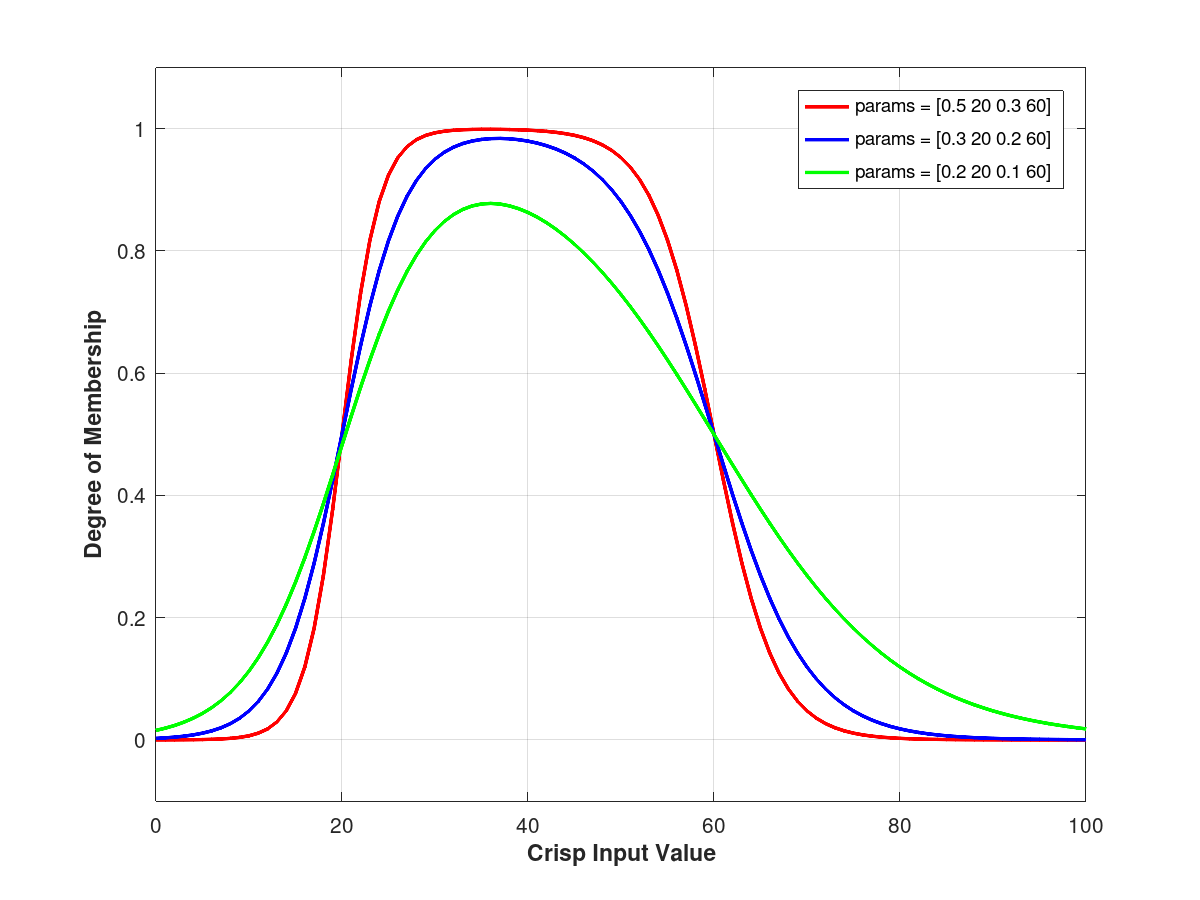- Function File: y = dsigmf (x, params)
- Function File: y = dsigmf ([x1 x2 ... xn], [a1 c1 a2 c2])
-
For a given domain x and parameters params (or [a1 c1 a2 c2]), return the corresponding y values for the difference between two sigmoidal membership functions.
The argument x must be a real number or a non-empty list of strictly increasing real numbers, and a1, c1, a2, and c2 must be real numbers. This membership function satisfies the equation:
f(x) = 1/(1 + exp(-a1*(x - c1))) - 1/(1 + exp(-a2*(x - c2)))
and in addition, is bounded above and below by 1 and 0 (regardless of the value given by the formula above).
If the parameters a1 and a2 are positive and c1 and c2 are far enough apart with c1 < c2, then:
- (a1)/4 ~ the rising slope at c1
- c1 ~ the left inflection point
- (-a2)/4 ~ the falling slope at c2
- c2 ~ the right inflection point
and at each inflection point, the value of the function is about 0.5:
- f(c1) ~ f(c2) ~ 0.5.
Here, the symbol ~ means "approximately equal".
To run the demonstration code, type demo('dsigmf') at the Octave prompt.
See also: gauss2mf, gaussmf, gbellmf, pimf, psigmf, sigmf, smf, trapmf, trimf, zmf.
Demonstration 1
The following code
x = 0:100;
params = [0.5 20 0.3 60];
y1 = dsigmf(x, params);
params = [0.3 20 0.2 60];
y2 = dsigmf(x, params);
params = [0.2 20 0.1 60];
y3 = dsigmf(x, params);
figure('NumberTitle', 'off', 'Name', 'dsigmf demo');
plot(x, y1, 'r;params = [0.5 20 0.3 60];', 'LineWidth', 2)
hold on;
plot(x, y2, 'b;params = [0.3 20 0.2 60];', 'LineWidth', 2)
hold on;
plot(x, y3, 'g;params = [0.2 20 0.1 60];', 'LineWidth', 2)
ylim([-0.1 1.1]);
xlabel('Crisp Input Value', 'FontWeight', 'bold');
ylabel('Degree of Membership', 'FontWeight', 'bold');
grid;
Produces the following figure
| Figure 1 |
|---|
 |
Package: fuzzy-logic-toolkit